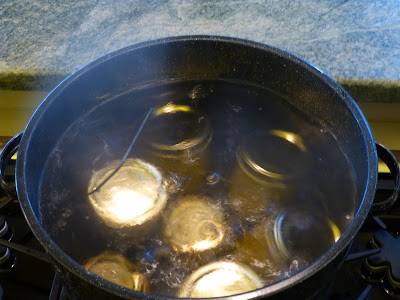 |
| Dehydrate your jalapeños and use for cooking this winter. Follow Foods For Long Life on FACEBOOK . |
Time to Pull Up the Summer Plants
I was sad to pull up my zucchini last week and now I'm getting ready to pick the last of my jalapeños. Since there are just so many jalapeños you can pop in your mouth, you may want to save them for cooking this winter. It just takes a few slices of dried jalapeños to spice up that chili or to make a spicy, Italian "fra diavolo" tomato sauce. So before it gets too cold, I picked a bunch of my precious peppers and dehydrated them.
 |
| My jalapeño plant |
Take Some Precautions
When you slice your jalapeños, they will give off fumes that can be quite caustic. As a precaution, I wear a mask. You should also be very careful not to touch the cut pepper slices or seeds. You will undoubtedly forget that you did until you go to rub your eyes - ouch!
 |
| I wear a mask when cutting jalapeños. You can also tie a handkerchief or bandana across your face. |
How to Dehydrate your Jalapeños
First, wash and dry your peppers.
Put on your mask (or at least tie a bandana across your face).
Holding the stem, being very careful not to touch the pepper, cut the jalapeños into thin, 1/8th inch slices. They can be a bit thicker but will take longer to dehydrate.
 |
| Hold on to the stem so that you don't touch the pepper. You can also wear rubber gloves. |
Pour the sliced peppers onto a non-stick dehydrator sheet.
Spread out, using a fork, so they have room and will dry evenly.
 |
| Spread out so they dry evenly. |
Dehydrate at 115 degrees F to maintain more of their vitamins and phytochemicals. It will take about 6 to 8 hours (or longer depending on how thick they were cut) until they are nice and dry.
 |
| Dried jalapeño slices |
Once they are dehydrated, place them in a jar and store. I like to keep them as slices but you can certainly grind them into a powder that is similar to cayenne.
 |
| Jar of sliced jalapeños |
Store in a cool place. Throw a few slices in any dish that needs a little zip. They will rehydrate as they cook.
Capsaicin
Capsaicin is the compound that makes jalapeños hot. It is also the compound that has many health benefits such as relieving congestion, fighting inflammation, helping you burn fat by stepping up your metabolism and more. To read more about jalapeños, check out Jalapeño Madness.





























































